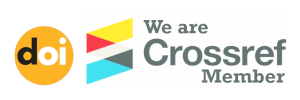CHALLENGES OF NOTE-TAKING IN POWERPOINT-BASED LECTURES: AN ANALYSIS OF FIRST-YEAR STUDENTS AT MUKUBA UNIVERSITY
Keywords:
Cognitive overload, student engagement, note-taking strategies, technology in education, active learning, higher educationAbstract
This mixed-methods study rigorously examines the cognitive and engagement challenges faced by first-year university students across four disciplines—Non-Quota, Nutrition Sciences, Education, and Computer Science—when engaging with PowerPoint-based lectures. A total of 60 students were selected using stratified purposive sampling to ensure discipline-specific representation. The study aims to critically assess the impact of PowerPoint presentations on cognitive overload, student participation, note-taking strategies, and the effective use of technology within lecture environments. The findings reveal that PowerPoint lectures, often characterized by fast-paced, information-dense slides, significantly contribute to cognitive overload. Students struggled with divided attention, attempting to transcribe slides while simultaneously processing verbal explanations, which led to shallow, passive learning. The teacher-centred nature of these lectures further diminished opportunities for active student engagement and critical thinking, as students primarily focused on transcribing content rather than interacting with the material in meaningful ways. Notably, the study highlights the prevalent use of passive note-taking strategies, such as verbatim transcription or photographing slides, which undermined deeper cognitive engagement and hindered information retention. While technology was perceived as a tool for enhancing learning, its use was often counterproductive, as it acted more as a distraction than an aid to understanding, particularly when students resorted to capturing slides rather than engaging critically with the content. This research highlights the pressing need for educators to recalibrate PowerPoint usage in ways that foster active learning. By designing less cognitively demanding slides, integrating interactive pedagogical strategies, and providing explicit guidance on effective note-taking techniques, instructors can mitigate the cognitive overload experienced by students. This study contributes significantly to the discourse on pedagogical practices in higher education, offering actionable recommendations to enhance the efficacy of PowerPoint-based instruction and promote deeper, more meaningful learning experiences across disciplines.
Downloads
References
Abdulla, M. H., & O'Sullivan, E. (2019). The impact of supplementing PowerPoint with detailed notes and explanatory videos on student attendance and performance in a physiology module in medicine. Medical Science Education, 29(4), 959-968. https://doi.org/10.1007/s40670-019-00780-8
Bosanac, M., & Vojčić, G. (2024). Taking notes during the teaching process in analogue and digital environments. Nastava i Vaspitanje. https://doi.org/10.5937/nasvas2402157b
Chen, A., Murphy, D., Brabec, J., Bjork, R., & Bjork, E. (2024). The effects of lecture speed and note‐taking on memory for educational material. Applied Cognitive Psychology. https://doi.org/10.1002/acp.4166
Flanigan, A. E., & Titsworth, S. (2020). The impact of digital distraction on lecture note-taking and student learning. Instructional Science, 48, 495–524. https://doi.org/10.1007/s11251-020-09517-2
Freeman, S., Eddy, S. L., McDonough, M., Smith, M. K., & Jordt, H. (2014). Active learning increases student performance in science, engineering, and mathematics. Proceedings of the National Academy of Sciences, 111(23), 8410–8415. https://doi.org/10.1073/pnas.1319030111
Freeman, S., Eddy, S. L., McDonough, M., Smith, M. K., Okoroafor, N., Jordt, H., & Wenderoth, M. P. (2014). Active learning increases student performance in science, engineering, and mathematics. Proceedings of the National Academy of Sciences U.S.A., 111(23), 8410-8415. https://doi.org/10.1073/pnas.1319030111
Grant, N. K., & McGrath, A. L. (2023). Effects of PowerPoint slides on attendance and learning: If you share it, they will (still) come. Scholarship of Teaching and Learning in Psychology, 9(3), 346–351. https://doi.org/10.1037/stl0000241
Kim, H. (2018). Impact of slide-based lectures on undergraduate students’ learning: Mixed effects of accessibility to slides, differences in note-taking, and memory term. Computers & Education, 123, 13–25. https://doi.org/10.1016/j.compedu.2018.04.004
Marsh, E., & Sink, H. (2009). Access to handouts of presentation slides during lecture: Consequences for learning. Applied Cognitive Psychology, 24, 691-706. https://doi.org/10.1002/ACP.1579
Meer, J. (2012). Students’ note-taking challenges in the twenty-first century: Considerations for teachers and academic staff developers. Teaching in Higher Education, 17, 13-23. https://doi.org/10.1080/13562517.2011.590974
Morehead, K., Dunlosky, J., Rawson, K. A., Blasiman, R., & Hollis, R. B. (2019). Note-taking habits of 21st century college students: Implications for student learning, memory, and achievement. Memory, 27(6), 807-819. https://doi.org/10.1080/09658211.2019.1569694
Mueller, P. A., & Oppenheimer, D. M. (2014). The pen is mightier than the keyboard: Advantages of longhand over laptop note taking. Psychological Science, 25(6), 1159-1168. https://doi.org/10.1177/0956797614524581
Palmatier, R., & Bennett, J. (2016). Notetaking habits of college students. The Journal of Reading.
Williams, J., McCarley, N., Sharpe, J., & Johnson, C. (2017). The ability to discern relevant from irrelevant information on PowerPoint slides: A key ingredient to the efficacy of performance feedback. North American Journal of Psychology, 19, 219.
Zellhoefer, A., Murken, N., Hustedt, B., Clemens, A., & Walenski, D. (2010). Interactive effects of PowerPoint and note-taking as a function of lecture pace among UW-Eau Claire students. North American Journal of Psychology.
Published on: 10-05-2025
Also Available On
How to Cite
Issue
Section
License
Copyright (c) 2025 Chishiba Gerald, Mukuka Joseph

This work is licensed under a Creative Commons Attribution 4.0 International License.
Authors contributing to this journal retain the copyright of their articles but agree to publish their articles under the terms of the Creative Commons CC-BY 4.0 License (http://creativecommons.org/licenses/by/4.0/) allowing third parties to copy and redistribute the material in any medium or format, and to remix, transform, and build upon the material, for any purpose, even commercially, under the condition that appropriate credit is given, that a link to the license is provided, and that they indicate if changes were made. They may do so in any reasonable manner, but not in any way that suggests the licensor endorses them or their use.


